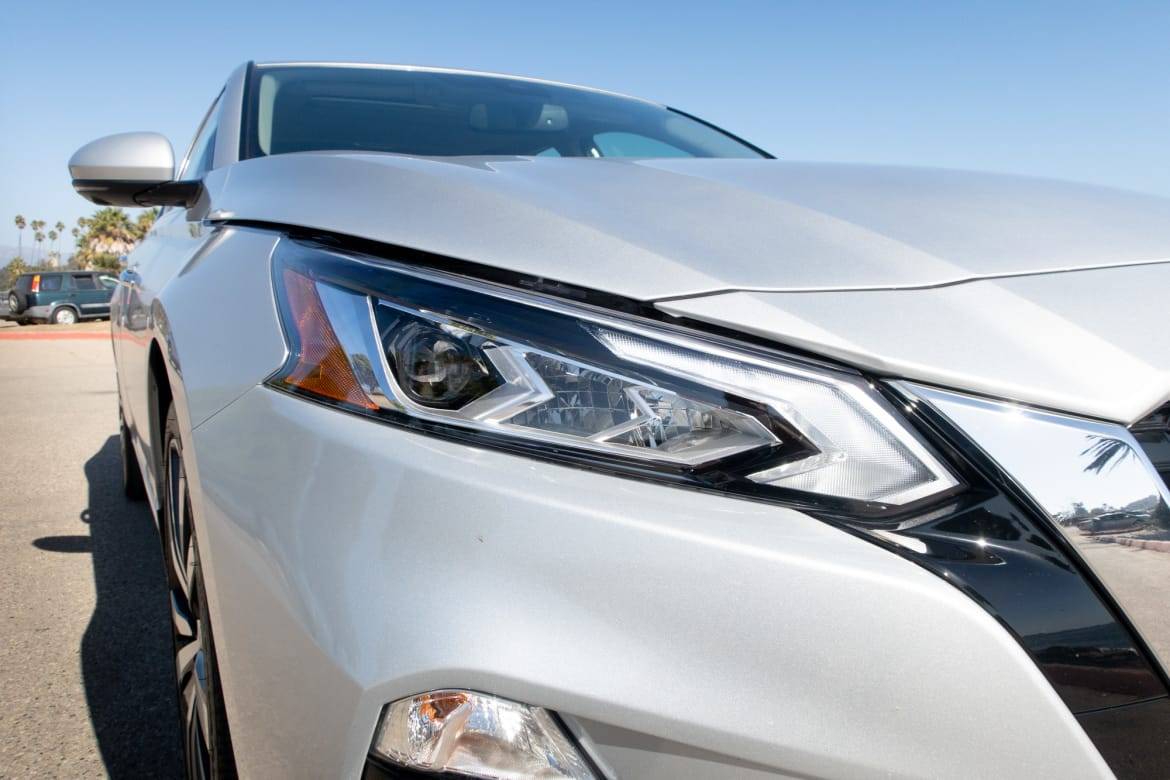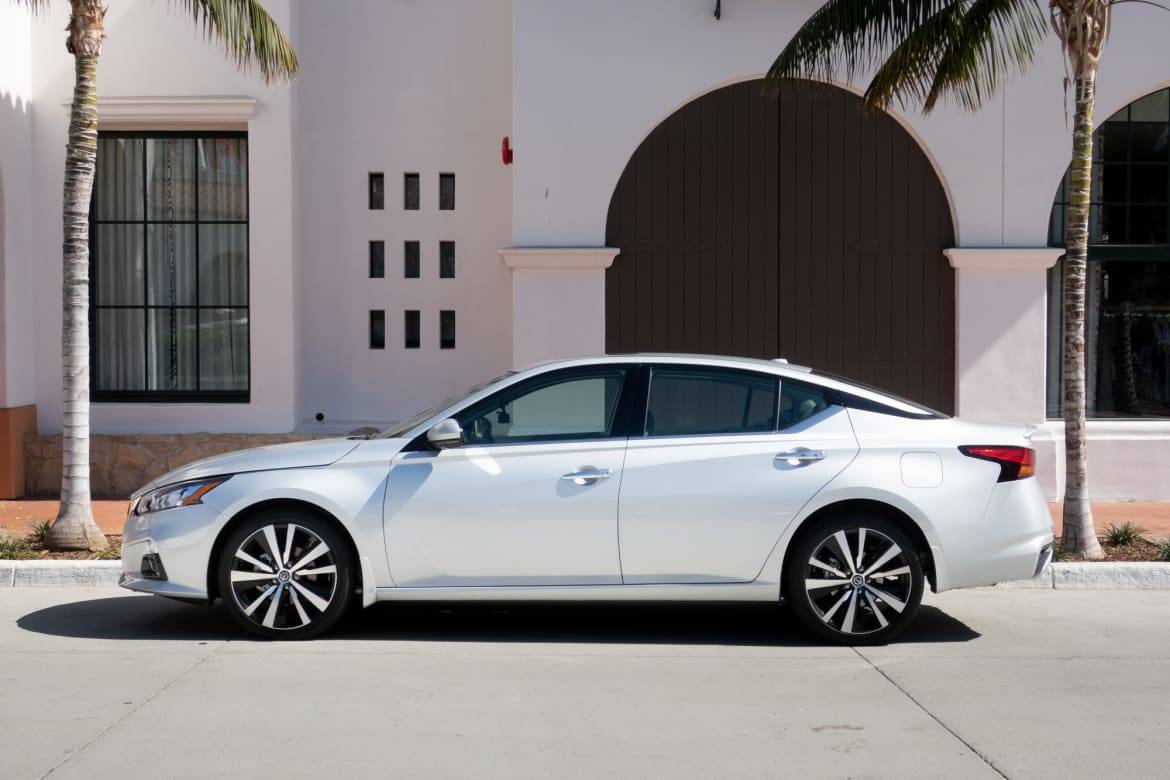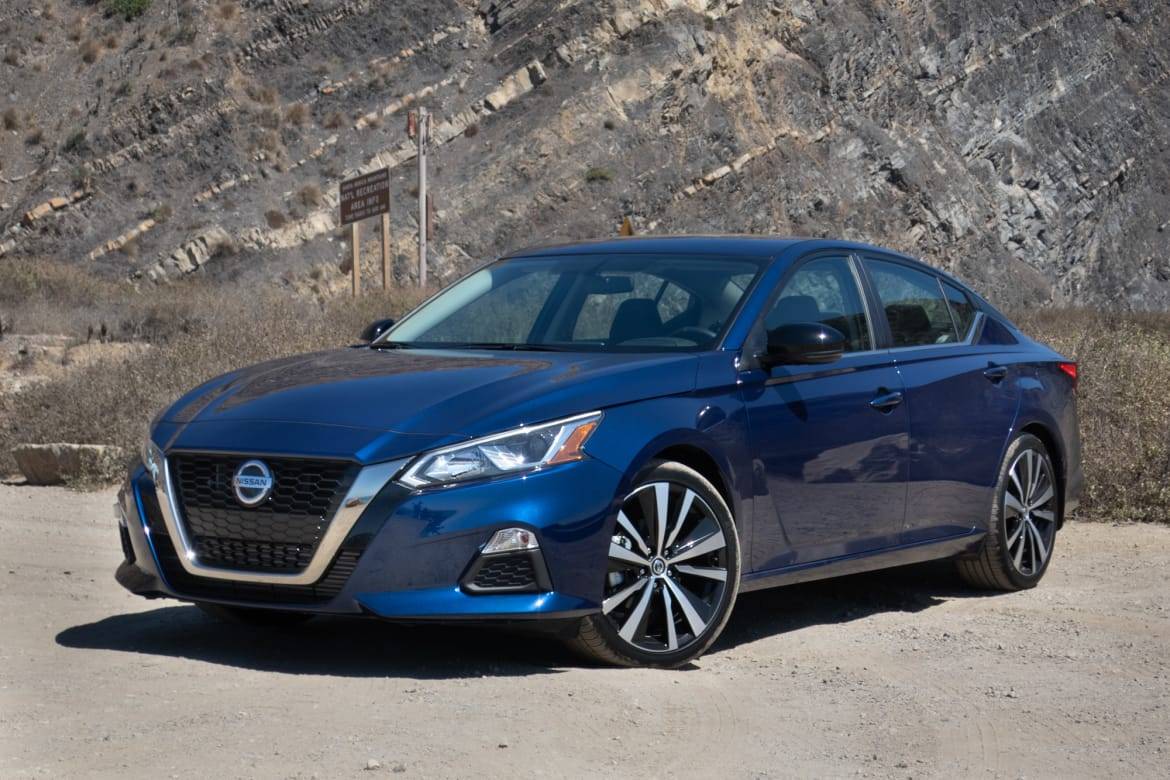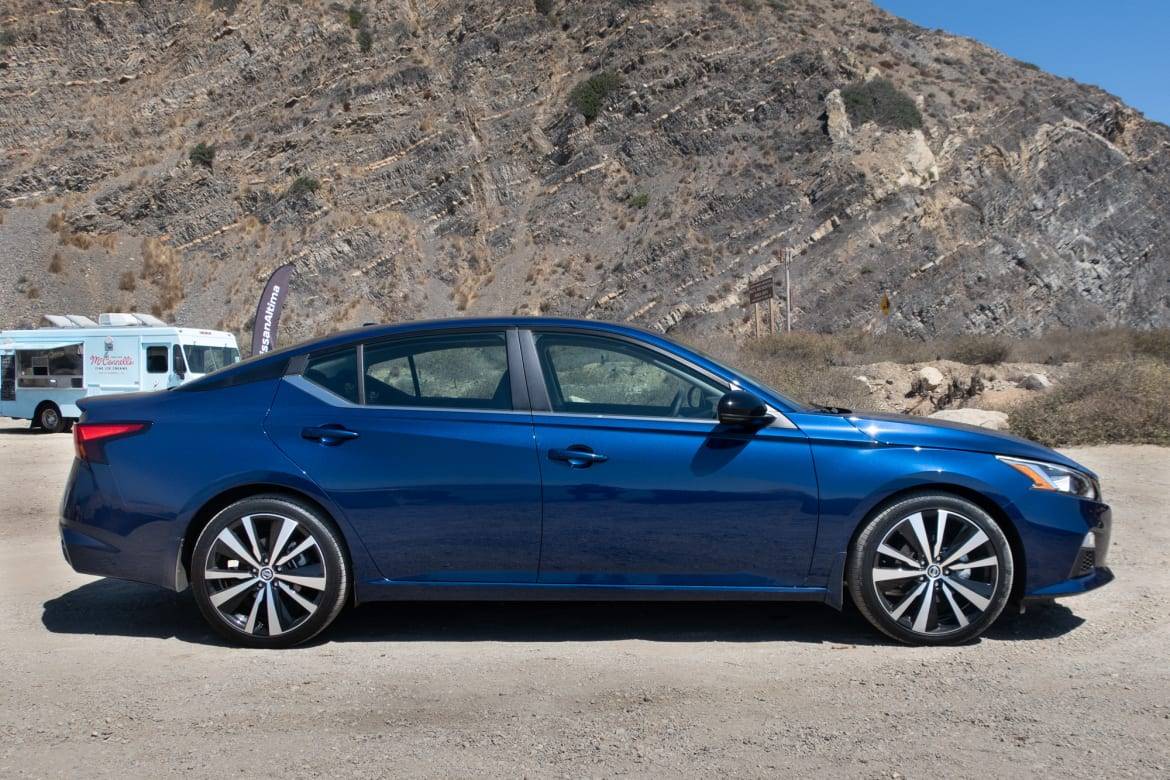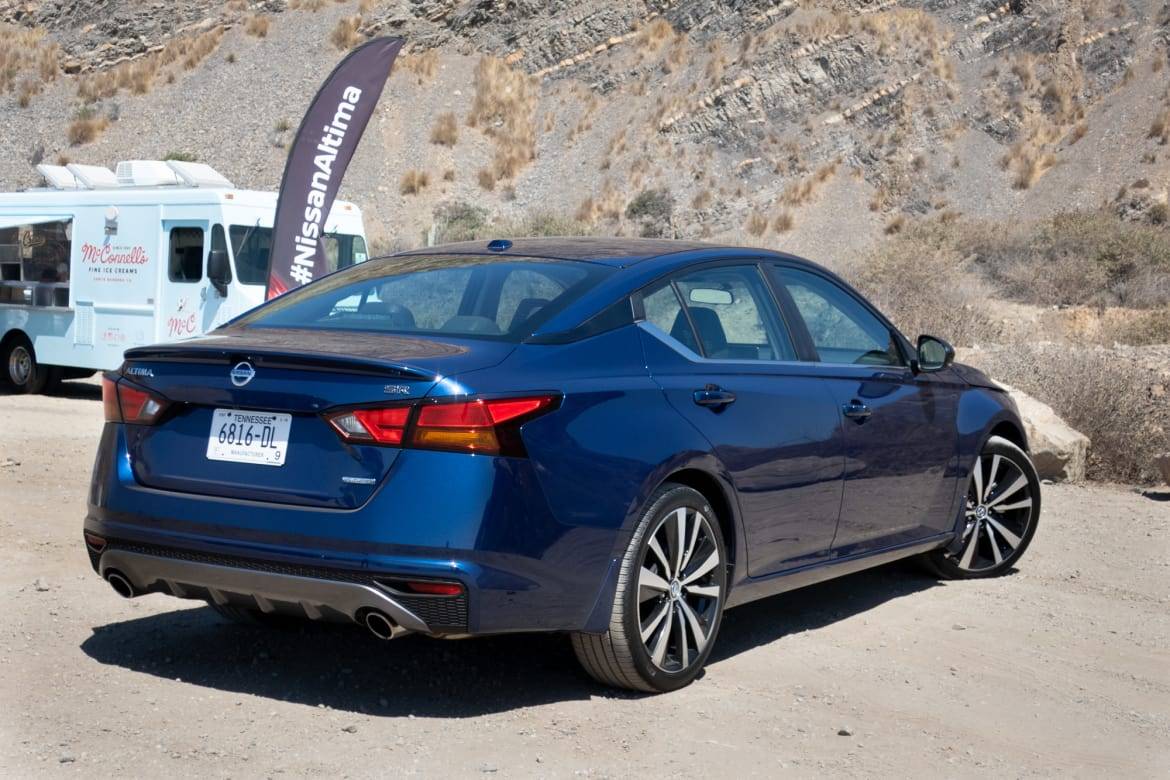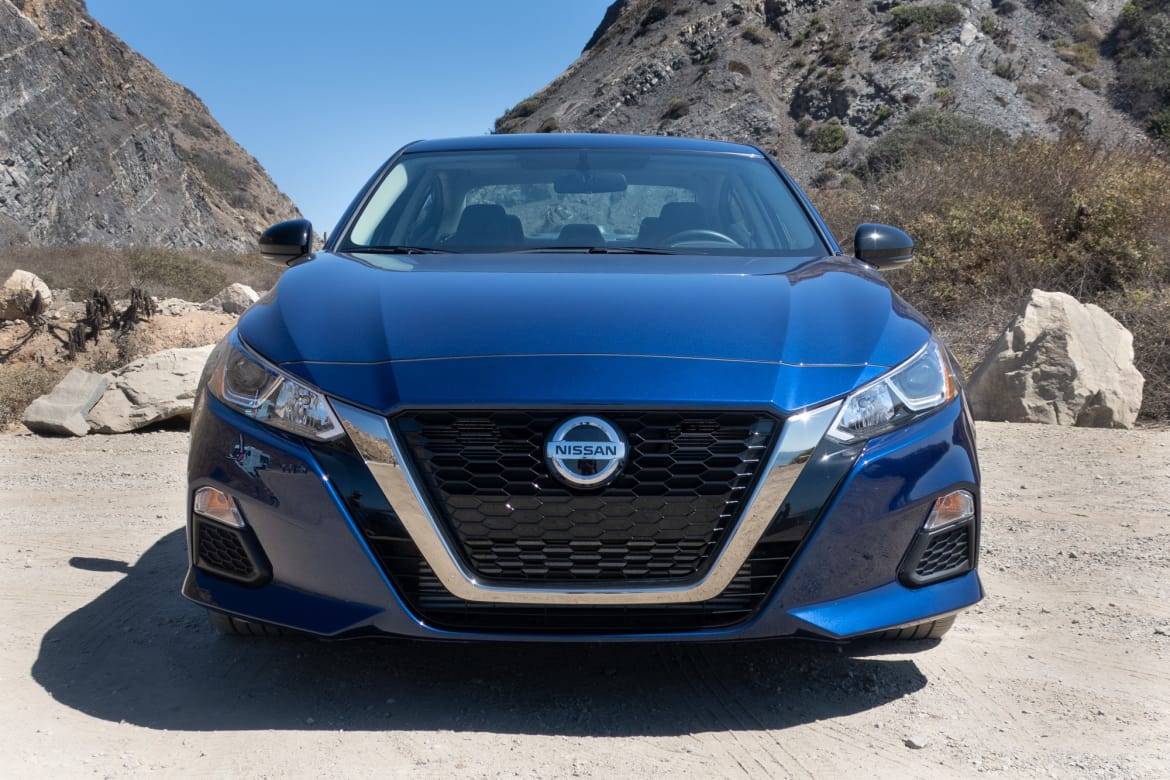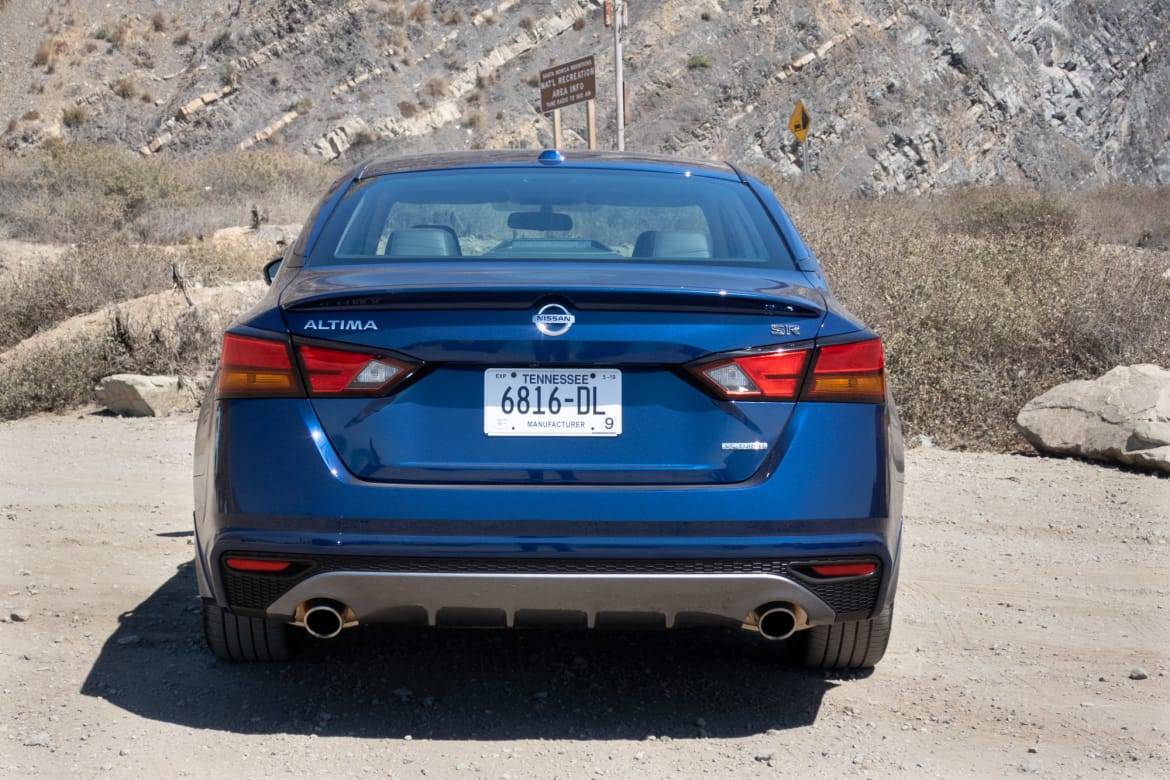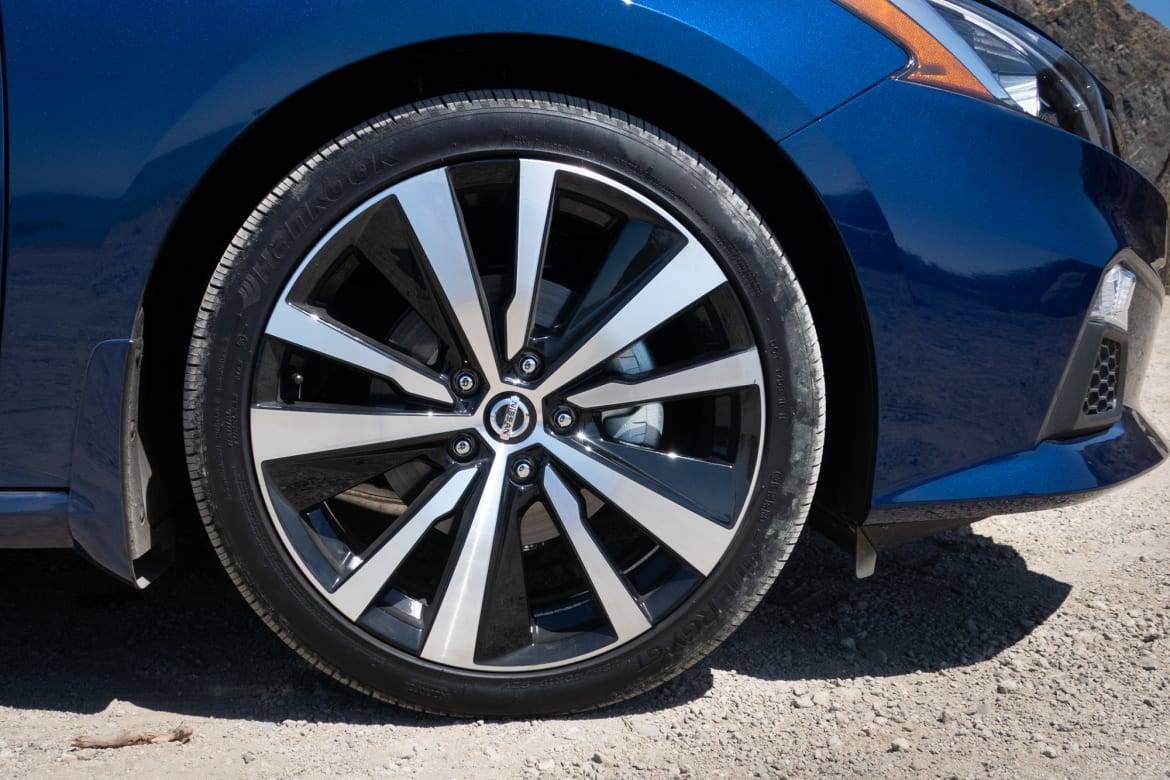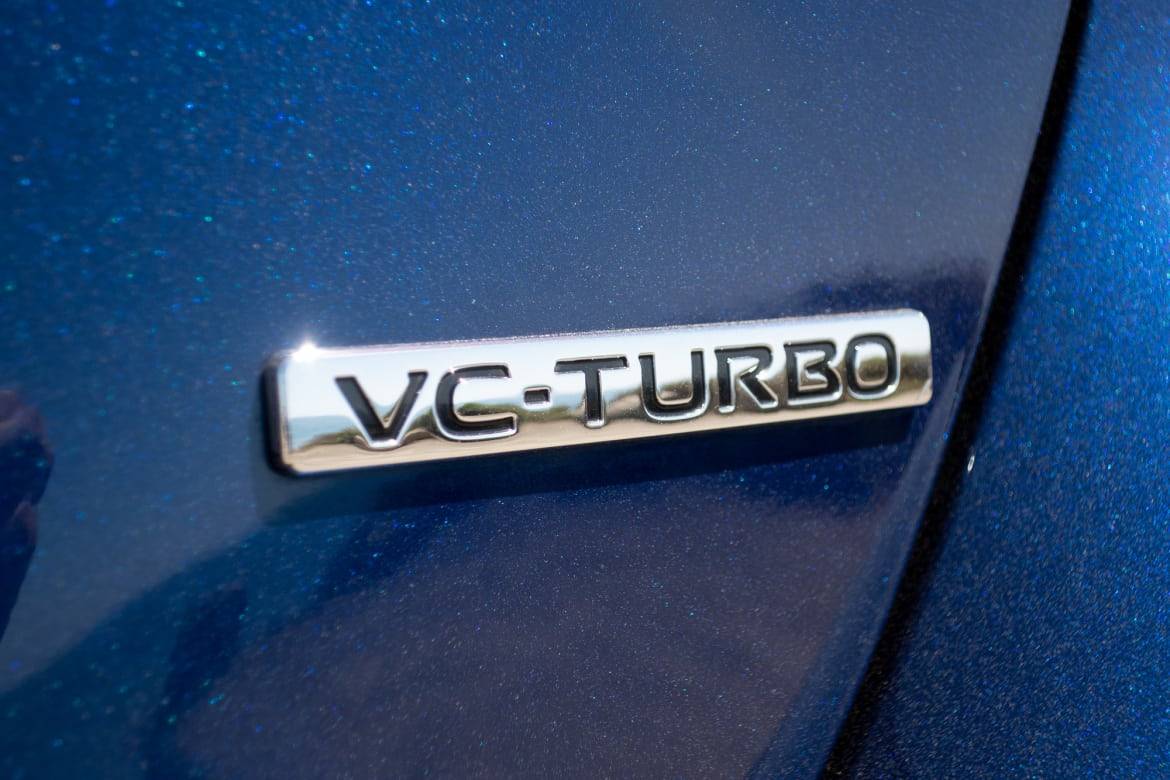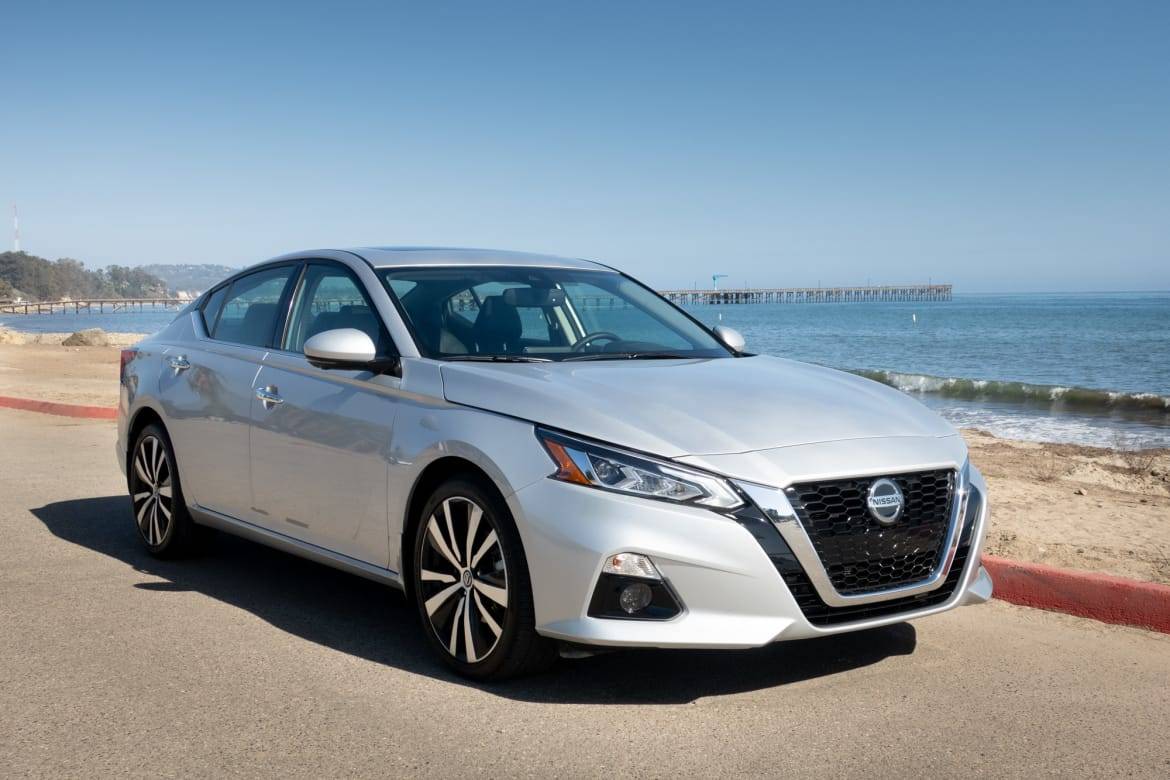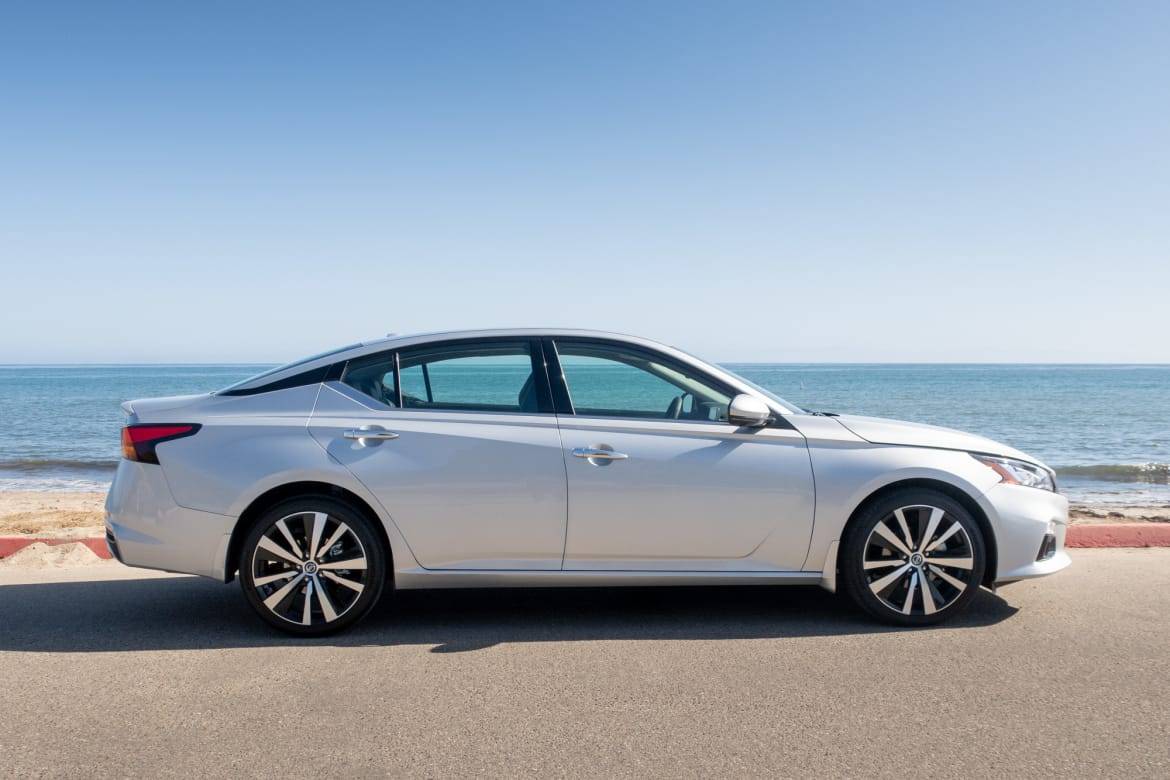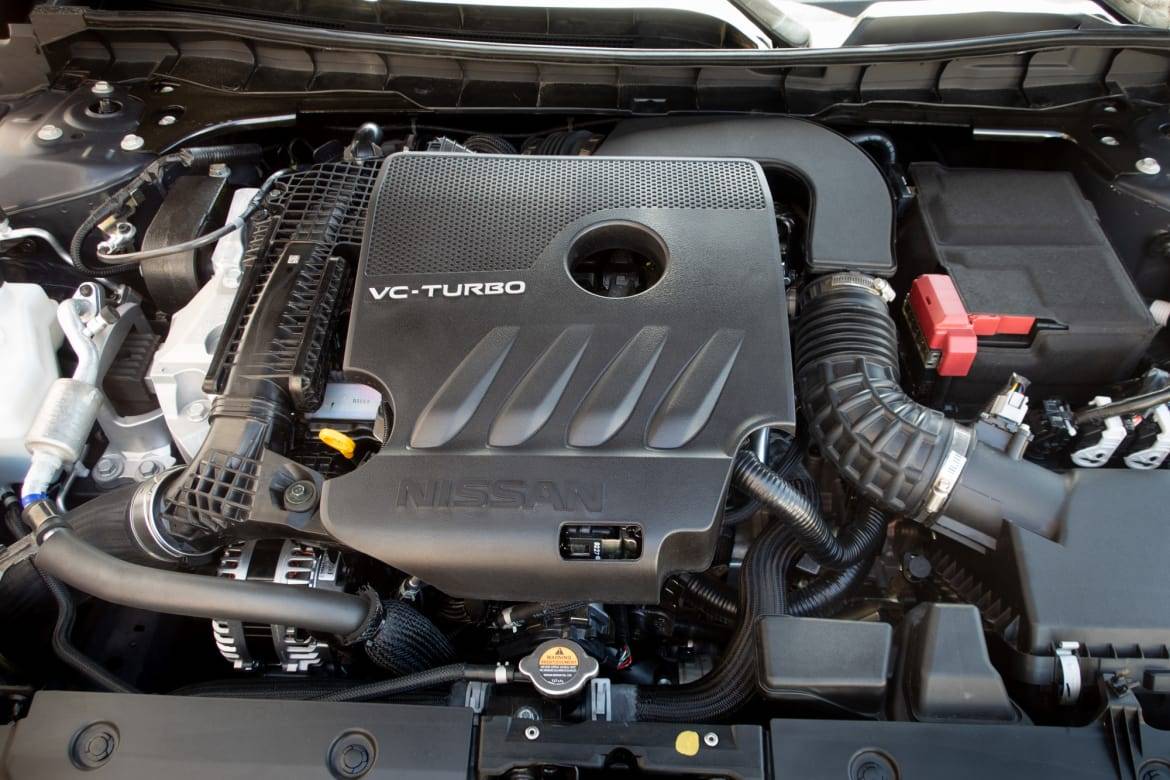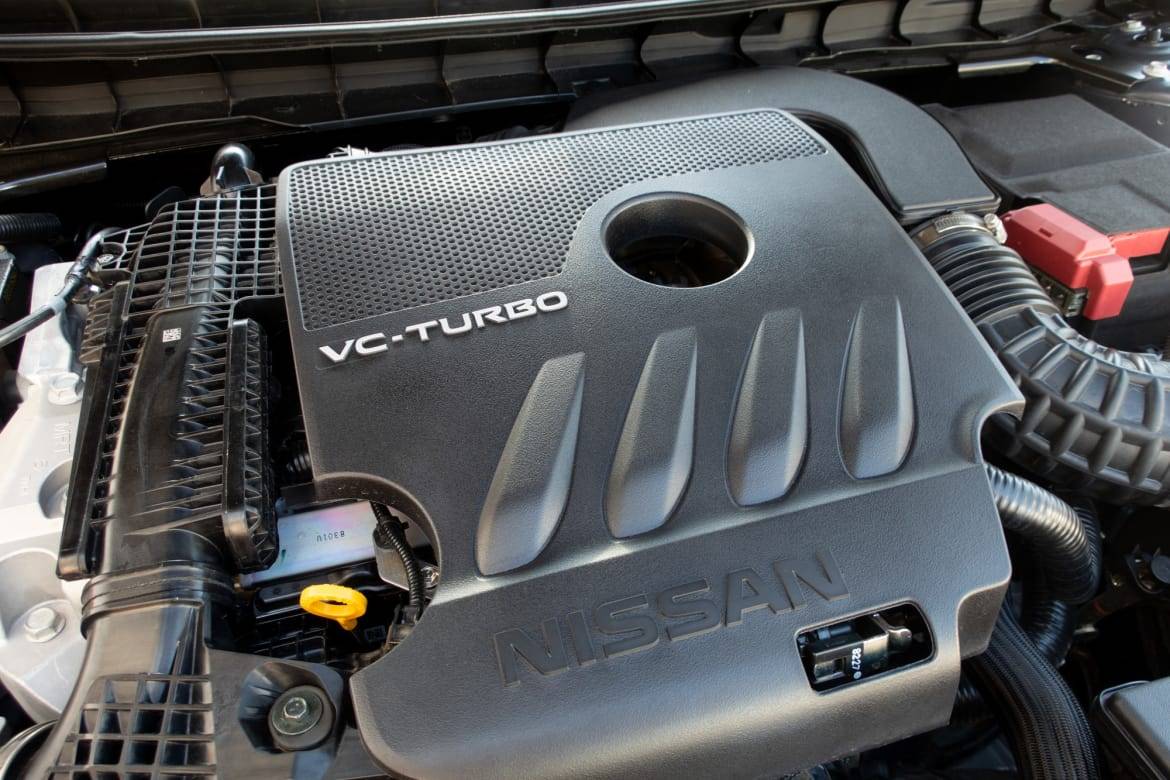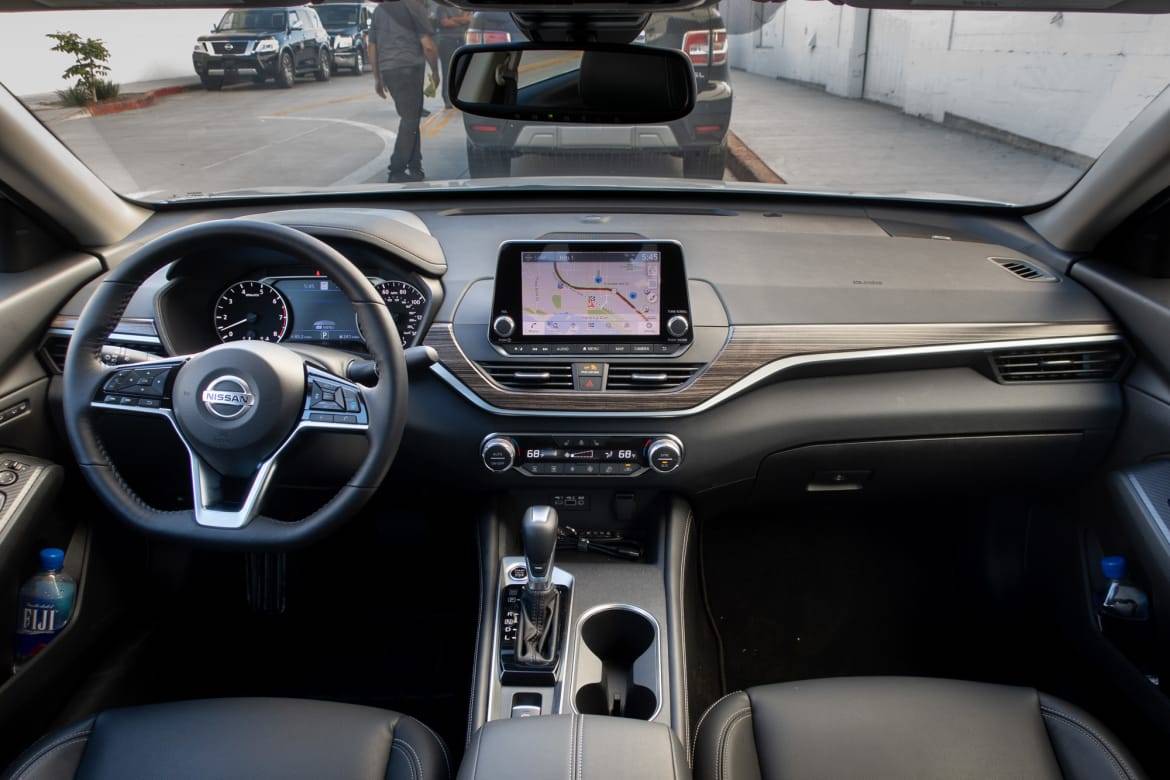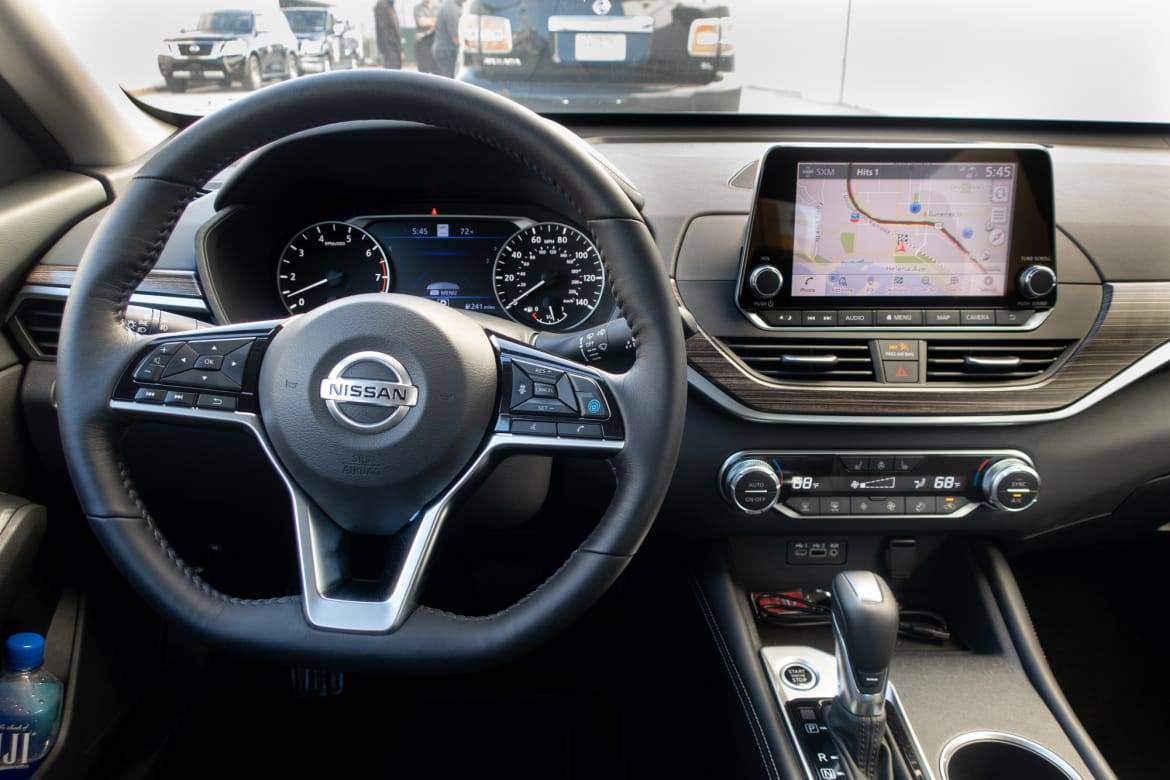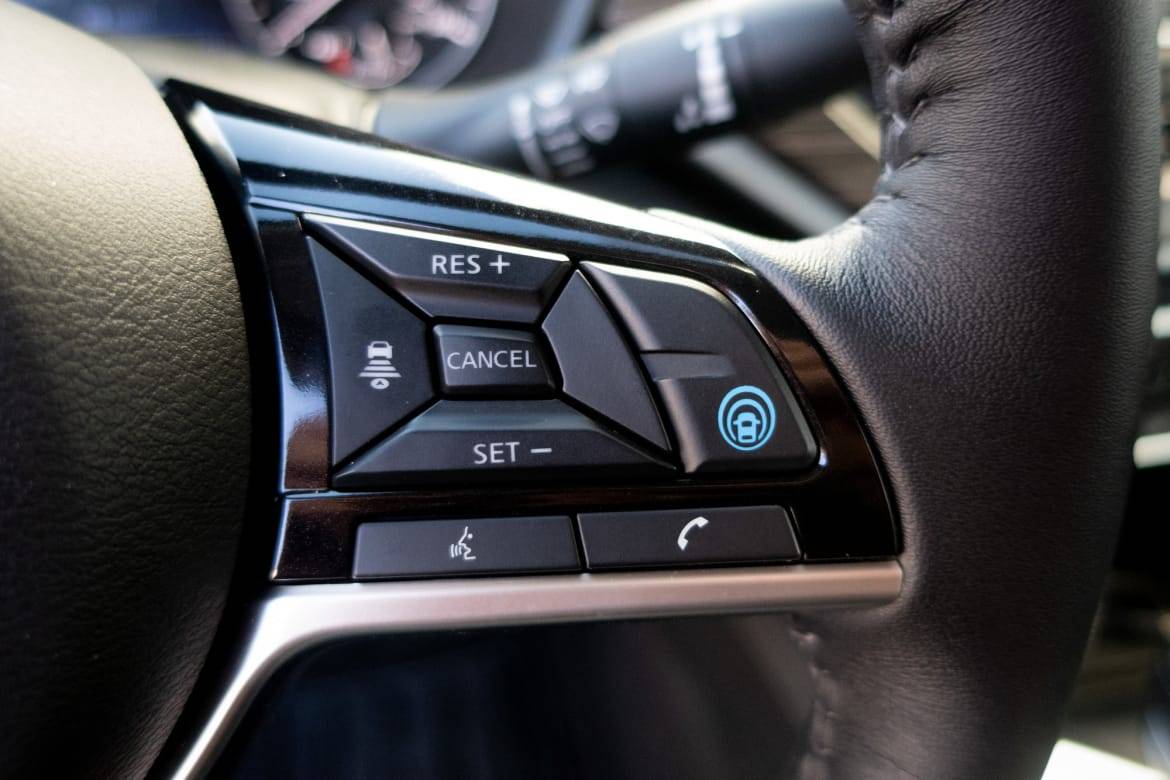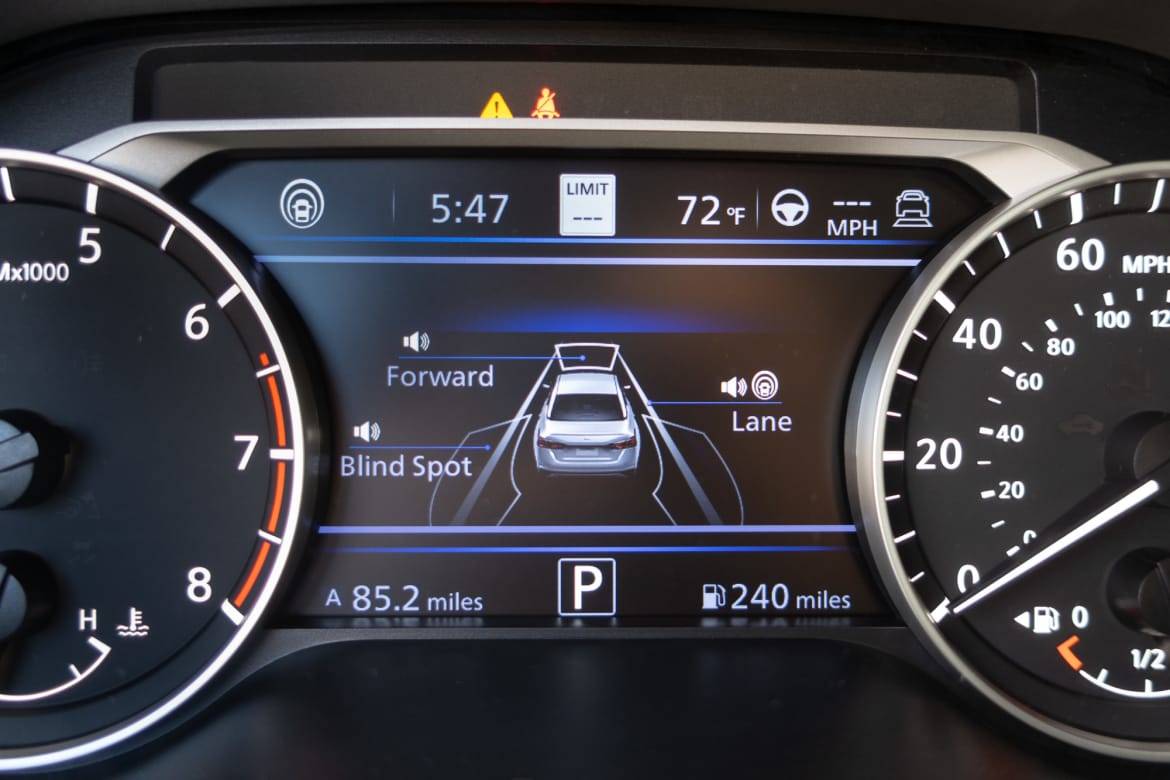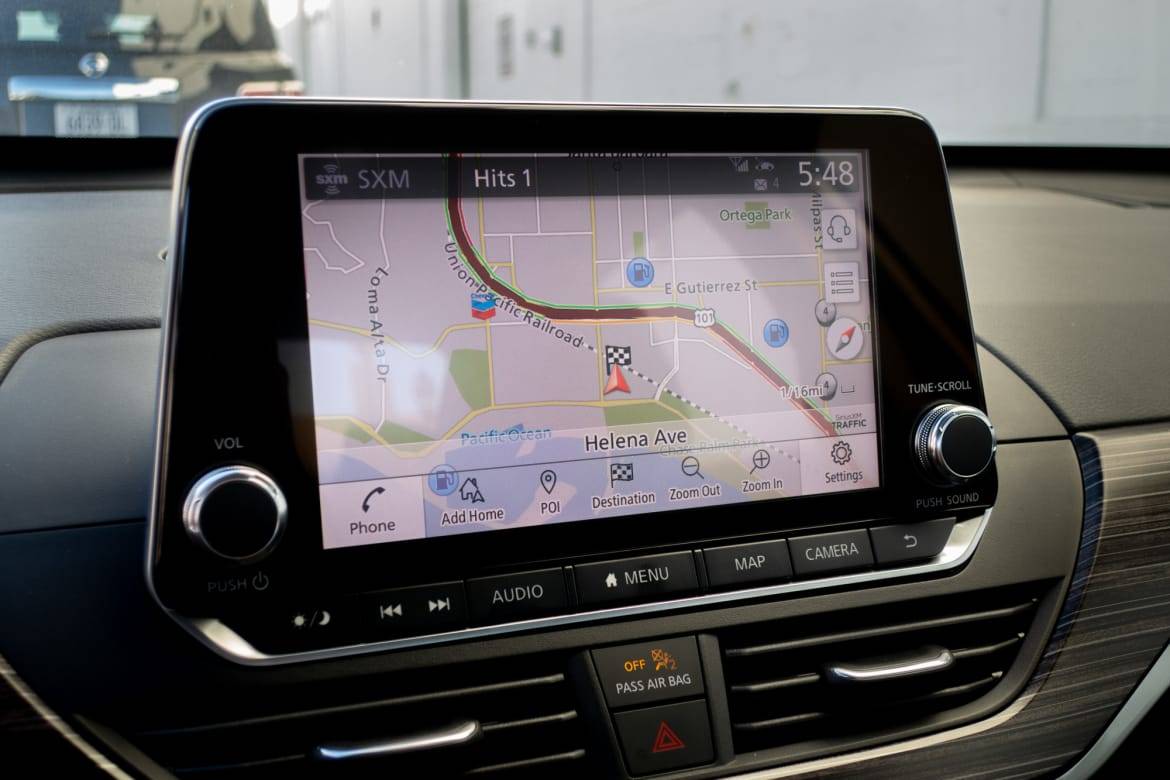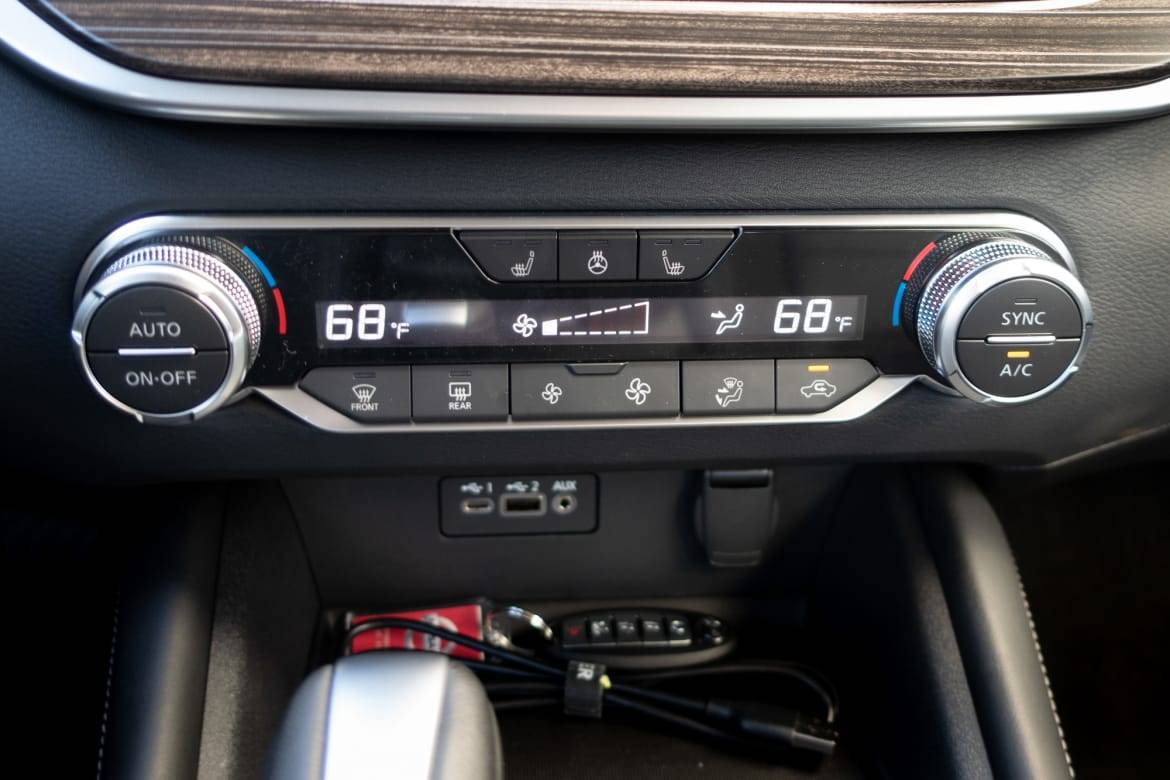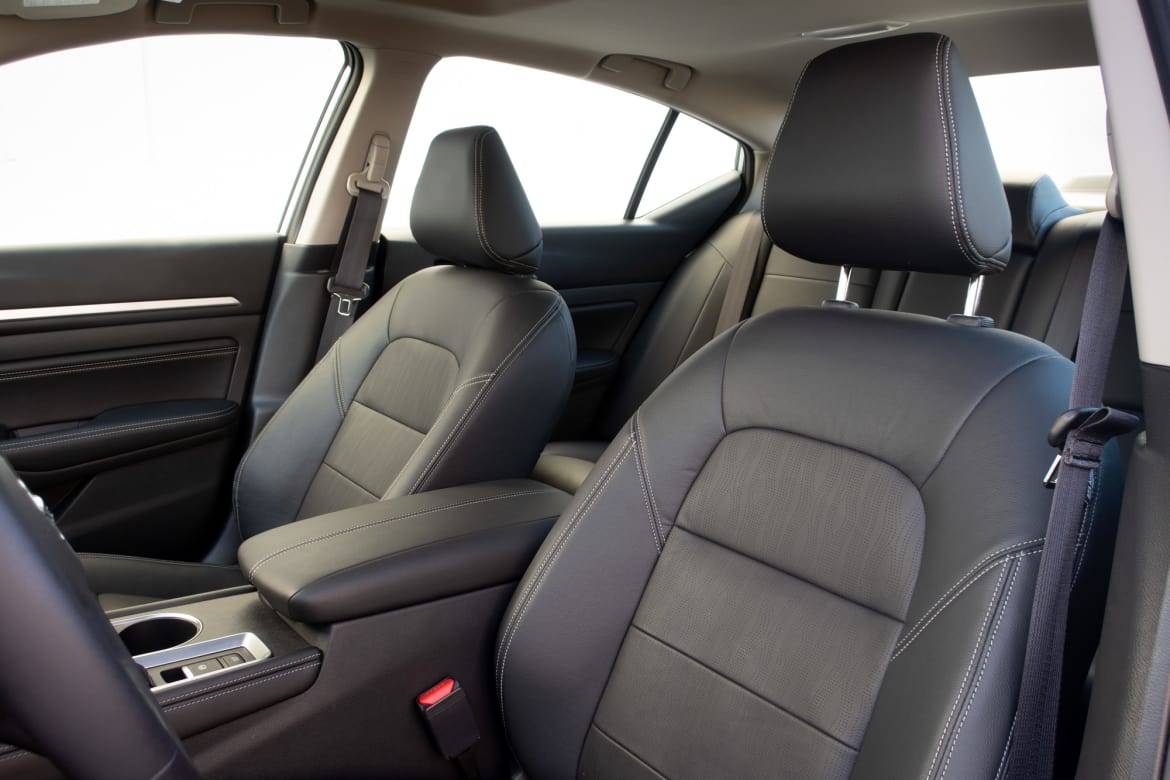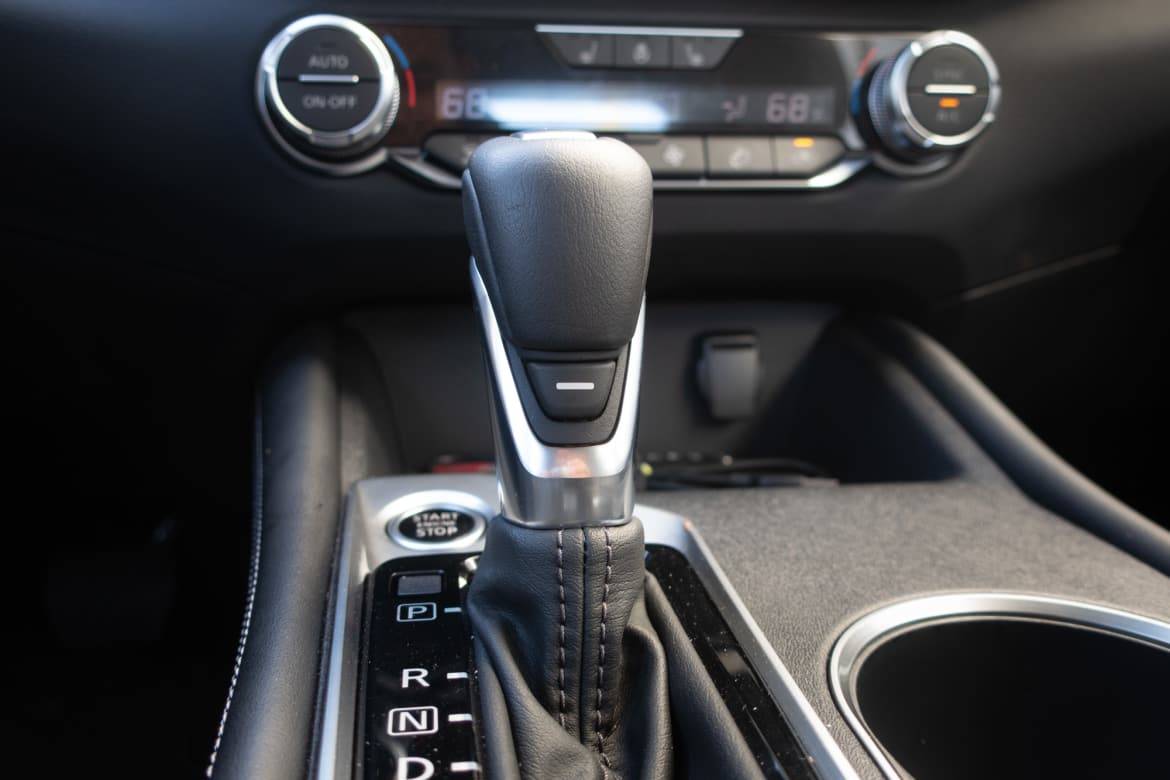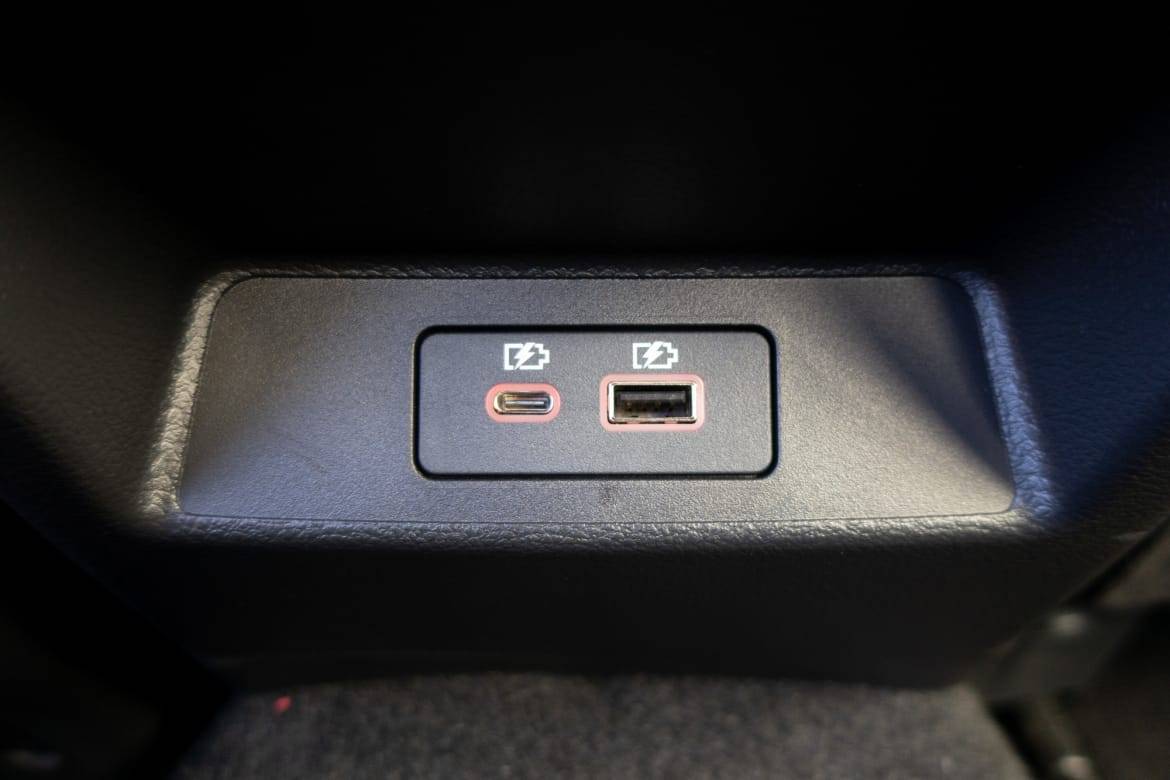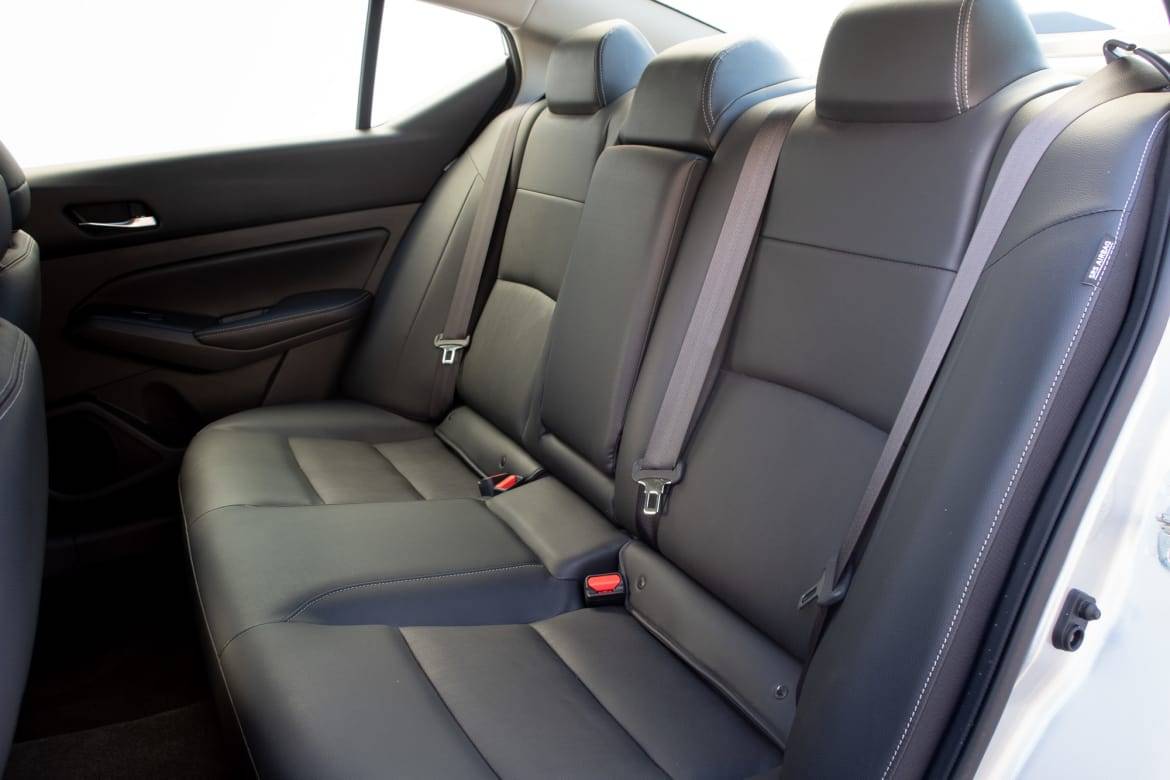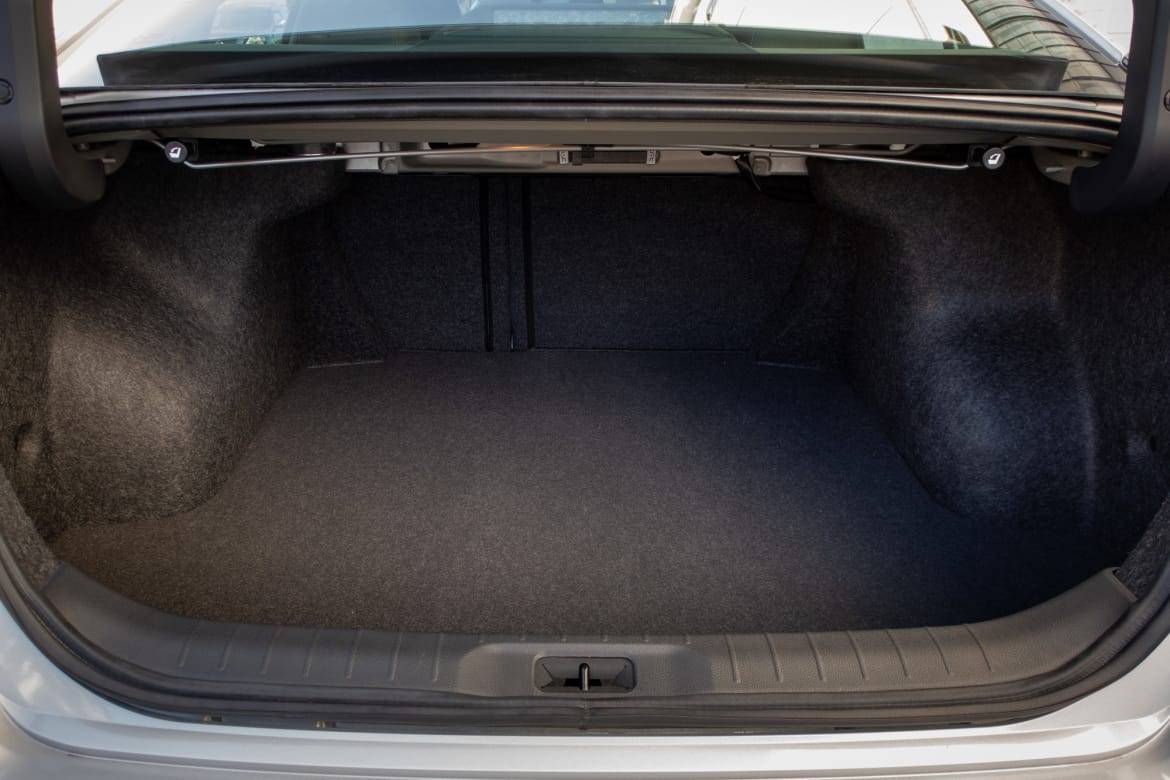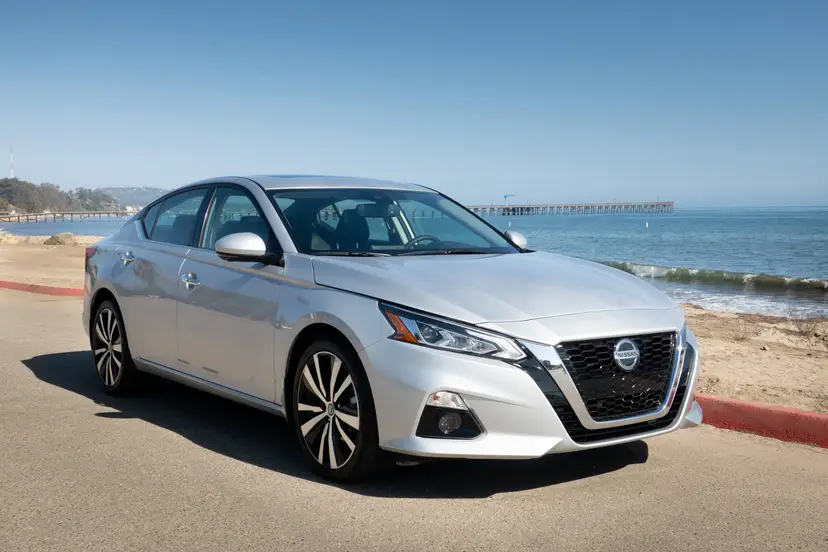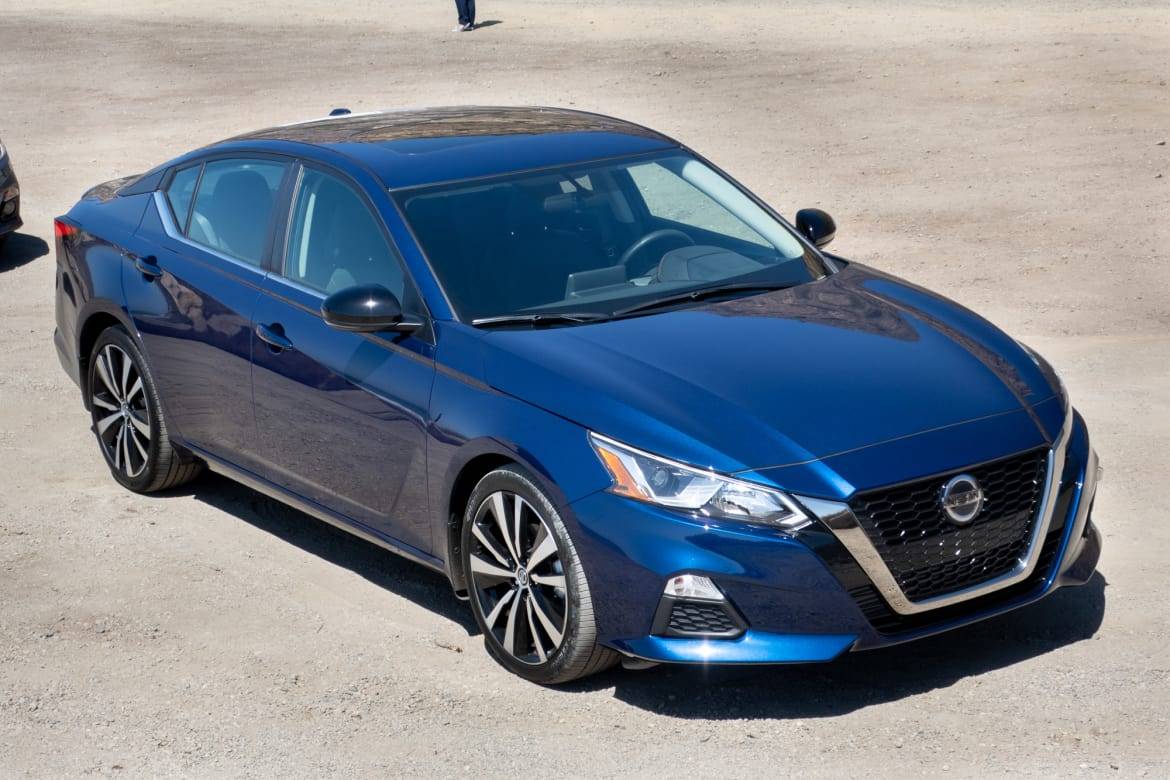
It was always going to be an uphill battle for the redesigned 2019 Nissan Altima. No car gets evaluated in a vacuum, but the Altima has an especially rough go of it, as it competes against two of the most prominent nameplates in automotive history: the Honda Accord and the Toyota Camry.
Related: How the 2019 Nissan Altima Measures Up to Camry, Accord
Nissan proudly informed me that this Altima is the sixth generation of the car, which has been sold in the U.S. for 25 model years now and features total sales of 5.7 million. I did some quick Google work after that and found that the Accord is celebrating its 42nd year in the U.S. and is the best-selling passenger car in America over that time according to Honda, with 12.5 million units sold. The Camry? It came some 35 years ago and sold its 11 millionth unit all the way back in 2013.
The previous generation of the Altima was behind the other two models in most categories even before both received highly successful overhauls for the 2018 model year. Now the bar is even higher. I headed to Nissan’s national media introduction in Santa Barbara, Calif., to drive the 2019 Altima and find out if the new car provides a suitable … Altim-ernative (couldn’t help myself). (In accordance with our ethics policy, Cars.com pays for its transportation to, and lodging at, such manufacturer-hosted events.)
New Engines, All-Wheel Drive
The changes start under the hood, where the Altima has two new engines. The 2.5-liter four-cylinder base engine has the same displacement as last year, but Nissan says 80 percent of its parts are new or redesigned; that’s enough for me to declare it new. It gets a slight bump in horsepower and torque, up to 188 hp and 180 pounds-feet from 179 and 177, respectively.
To give the Altima some differentiation from competitors, it now offers all-wheel drive (a $1,350 option), but only with the base engine. The system can send 50 percent of available torque to the rear wheels and has a brake-based torque-vectoring system to move that torque left and right. I drove front- and all-wheel-drive versions of the Altima, and you won’t really feel a difference on paved roads; the AWD’s front-wheel bias makes its road manners pretty much the same.
Replacing the 3.5-liter V-6 is a turbocharged 2.0-liter four-cylinder with variable-compression technology that Nissan calls “VC-Turbo” for short. It costs an extra $3,000. Variable compression means that the engine can change the amount of compression on the fly, in this case between 8:1 and 14:1. The lower side (8:1) is better for power but less efficient; higher compression (14:1) is the opposite. Nissan says the engine varies within that range depending on demand. This video, by way of Nissan luxury brand Infiniti, shows the system in action.
This is the second application we’ve seen of this engine, which debuted in the 2019 Infiniti QX50 and got mixed reviews from us due to its strong pulling power but strange lag (seemingly from the transmission) and uneven throttle response. In the Altima, the engine has been retuned and makes slightly less power, at 248 hp (though torque is the same, at 280 pounds-feet). I actually found the power delivery to be a bit smoother in the Altima, and the engine matches the smaller car better than the larger SUV — it feels less taxed and it’s easier to control the amount of power coming out.
But the transmission lag is still an issue, and because the 2019 Altima sticks with a continuously variable automatic transmission for both engines, it’s double trouble. From a stop, the transmission seems to hold the engines at low rpm with a slow wind-up, so the Altima feels sluggish. When paired with the more powerful engine, it’s a bit better; at a certain point, the engine kicks with enough power to overwhelm the CVT’s reticence. But the base engine doesn’t offer that luxury. The only saving grace for the transmission (with either engine) is a small button located on the back of the shifter that activates a sportier mode, making the acceleration more responsive. Also helpful are the paddle shifters found on the SR trim, which works the transmission through eight fixed gear ratios. And speaking of the SR …
Why Stop at SR?
… The SR is the Altima’s sporty trim level, and it has some mechanical changes beyond the usual cosmetic differences, as well. That’s a good thing, because the other trims are each too soft in suspension, steering and speed to keep up with the competition. I found the steering to be the biggest offender, with a vague, overboosted feeling that doesn’t inspire confidence.
The SR fixes some of the issues. It has 10 percent stiffer springs and adds steering weight, which improves the feel you get from the road while maintaining a comfortable ride that’s not overly busy. Perhaps most important, it has paddle shifters that give you some control over the laggy transmission.
These changes don’t make a truly sporty version of the Altima, but rather the minimum that the other trims unfortunately don’t achieve. If they did, it would open up the SR to offer an even more aggressive setup. However, while the SR is the best one to drive, it may not be the one to get because there aren’t any safety options available, and the next-highest SV trim gets ProPilot Assist and Safety Shield 360.
Safety Somewhat Standard
What you get technology-wise at each trim level can’t be adjusted. The Altima doesn’t offer option packages beyond one on the SR that adds a few features, none of them safety-focused.
S models come with forward automatic emergency braking and a driver alertness monitor, and the SR adds blind spot warning with rear cross-traffic alert. As mentioned, the SV and higher trims come with nearly the full range of available safety features: Safety Shield 360 adds pedestrian detection to the forward automatic braking system, as well as rear automatic braking, automatic high beams, lane departure warning and ProPilot Assist, which is Nissan’s name for adaptive cruise control (that works down to a stop) combined with lane-centering.
Normally, I find it a bit annoying when automakers give these features fancy, individualized brand names because they become hard to keep track of. But if you make a system that works this well, then hell, Nissan can call it whatever it wants. Everything from the alerts and the smoothness with which the Altima accelerates and decelerates to the impressive lane-centering feels spot-on. It just works.
Multimedia Leap
The multimedia system, meanwhile, has taken a massive leap forward in this redesign. It’s a raised, tablet-style screen that sits atop the center console but not so high as to appear disjointed from the rest of the controls. I was impressed that the 8-inch screen was standard on all trim levels, as are both Apple CarPlay and Android Auto — something that neither the Accord nor Camry can say.
Its position is also easily reachable from the driver’s seat without stretching too far forward, and the physical buttons are found below the screen rather than the sides, which also helps ergonomics. The system doesn’t really break much new ground and it’s not particularly attractive graphically, but it’s simple and works fast, and those two things are most important to me (along with the smartphone mirroring).
Certainly Better, But Better Enough?
Nissan did a good job addressing a few of the outgoing Altima’s key weaknesses in this redesign. Safety features have been reinforced (the old model didn’t offer ProPilot Assist), the multimedia system looks modern and adds a lot of functionality, and the front styling is no longer snooze-inducing. Photos don’t quite do justice to the dramatically low nose and sharper side sculpting. It also offers all-wheel drive now, which positions the Altima as a competitor to the Subaru Legacy.
However, the Altima still has a few key shortcomings when you put it up against the redone Accord and Camry. Those two made big leaps in driving dynamics for 2018, but the Altima comes up short in that area for 2019. I understand why a company would put a CVT in this car for efficiency gains, but understanding doesn’t mean I have to like it. The Altima’s interior also feels a step behind in terms of materials quality against competitors’ higher trims, though its top trim levels are also a bit more affordable.
It’s worth noting that part of the appeal of the VC-Turbo engine and CVT combination is its efficiency, and its estimated rating of 25/34/29 mpg city/highway/combined is better than the fuel economy found in both the Accord and the Camry with their optional engines. The turbocharged 2.0-liter four-cylinder in the Accord and the 3.5-liter V-6 in the Camry both offer 22/32/26 mpg. That’s not a small difference in fuel economy, but I think there’s a bigger gap in performance between the VC-Turbo and those engines — enough of one that I’d take the lower fuel economy of that pair over the Altima’s muted feel.
My qualms with the Altima don’t disqualify it. Its driver-centric shortcomings can be overcome by its other strengths, and it doesn’t drive so badly as to be unlovable, just annoying.
Vehicles in this class other than the Accord and Camry have taken a different approach: Be excellent at one thing. The Mazda6 has driving prowess, the Kia Optima and Hyundai Sonata have massive warranties and value, and the Legacy has had all-wheel drive (though it’s now joined by the Altima). The Altima attempts for all-around goodness and just comes up a little short. The gap between the Altima and the class leaders has certainly shrunk, and I can confidently say that I like the Altima — I just like the other two a bit more.
Cars.com’s Editorial department is your source for automotive news and reviews. In line with Cars.com’s long-standing ethics policy, editors and reviewers don’t accept gifts or free trips from automakers. The Editorial department is independent of Cars.com’s advertising, sales and sponsored content departments.



































